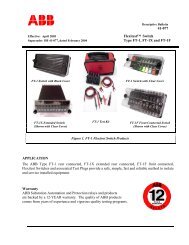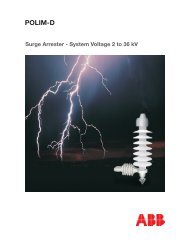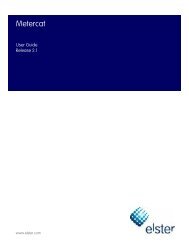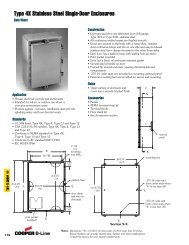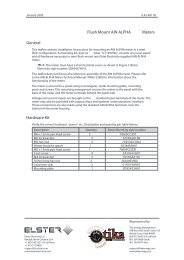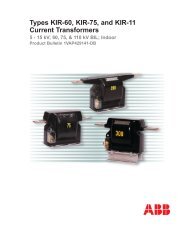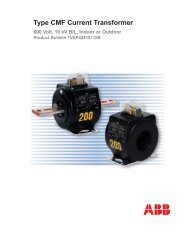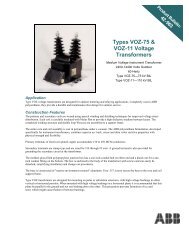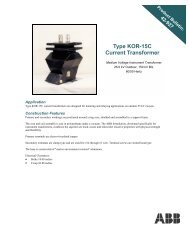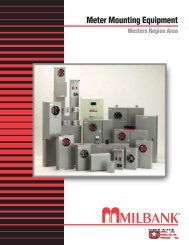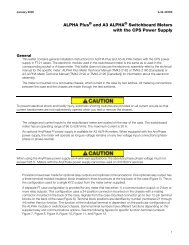TEST SWITCHES TEST SWITCHES - Brooks Utility
TEST SWITCHES TEST SWITCHES - Brooks Utility
TEST SWITCHES TEST SWITCHES - Brooks Utility
You also want an ePaper? Increase the reach of your titles
YUMPU automatically turns print PDFs into web optimized ePapers that Google loves.
Meter Devices Test Switches<br />
The Short Circuit Clip<br />
Developed by Meter Devices, the<br />
short circuit clip eliminates the<br />
weakest, most troublesome part of<br />
most present<br />
day test<br />
switches.<br />
It is a make<br />
before-break<br />
type, made<br />
from one piece of<br />
phosphor bronze. It cannot get out<br />
of alignment; projections on the<br />
knife blade prevent raising the<br />
blade to a point where it is out of<br />
contact with the clip. A return<br />
strap completes the circuit to the<br />
spring jack.<br />
Test Jack<br />
Eliminates the possibility of<br />
accidentally opening CT<br />
secondaries and permits safe, easy<br />
measurements to be made in<br />
current circuits without disturbing<br />
permanent wiring. A dual-circuit<br />
test plug, such as Meter<br />
Devices Cat. #903-1116, is<br />
inserted into the test jack,<br />
putting the measuring<br />
instrument in<br />
series with the<br />
current circuit.<br />
Barriers<br />
Barriers of flame-resistant nylon<br />
are normally supplied between<br />
potential elements of all switches<br />
where center-to center spacing is<br />
less than one inch. Meter Devices’<br />
barriers are higher than<br />
competitive brands to provide an<br />
extra measure of safety.<br />
Optional Channel Barriers<br />
Meter Devices<br />
can now supply<br />
channel barriers<br />
as an option<br />
replacing the<br />
standard snap-in<br />
barriers. The<br />
channel barriers<br />
are made of the<br />
same flame-resistant material as<br />
the standard snap-in barriers. The<br />
channel barriers also provide<br />
the mechanical and electrical<br />
advantages as the standard<br />
snap-in barriers.<br />
Wire Saddle & Terminal<br />
Studs<br />
Provided as standard for wiring test<br />
switches, wire saddle traps the<br />
wire or crimp connector to insure<br />
positive location and protect<br />
against rotation. The terminal stud<br />
is long enough to accept multiple<br />
connections at one point. For ease<br />
of wiring, solderless terminals are<br />
an option (in place of the wire<br />
terminal stud).<br />
Hexagon Nuts<br />
Of 3/8 “ heavy brass for fastening<br />
wire.<br />
Test Ears - Provided<br />
A serrated or corrugated test ear of<br />
ample size is designed to positively<br />
prevent test clips from coming off<br />
unless the spring tension is<br />
released.<br />
3



